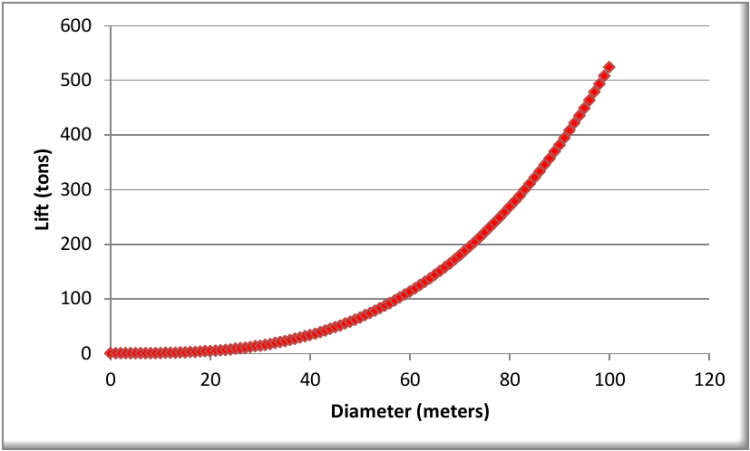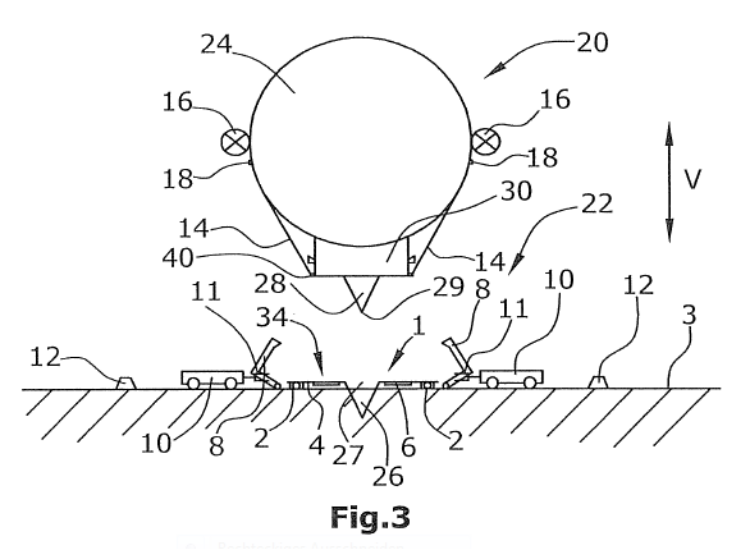Airship
Starting from an in-depth analysis of past, unsuccessful heavy lift airship projects the step-by-step approach for the KISS-Airship has been developed. The key design principle was simplicity in order minimize technical risks. The KISS design is intentionally „low-tech“: Basically a large gas bag with an underslung cart with attached engines, built from off-the-shelf components. The concept has been discussed, enhanced and fine-tuned with experts from the international airship community, potential customers and prospective suppliers. Remote controlled scale models demonstrated the concepts’ validity and provided the basis for the patent application, sponsored by the German government.
The Features of KISS
In accordance with the KISS principle, the requirements for our airship have been stripped down to the bare minimum. All features build upon proven technologies that can be easily sourced by external suppliers. We do not want to develop any component of the airship on our own, but rather take it off-the-shelf. Consequently, engineering risks, development times and costs are minimized. In essence, the KISS Airship is a very large propelled balloon. With the following distinctive features:
- Spherical shape: eliminates the need for complex rigid structures of conventional airships, is easily scalable and provides the optimal volume/lift ratio
- Hydrogen as a lifting gas: is more than 10 times cheaper than helium, has up to 10% more lift, could be used as a fuel (e.g. for on-board fuel cells) and is not a limited natural resource like helium
- Suspended cart with engines: similar to the passenger compartment of a hot air balloon the cart is freely suspended below the balloon hull. The majority of the airship’s systems are integrated into the cart, eliminating difficult engineering tasks like hull mounting of engines and enabling separate construction of cart and hull.
- Unmanned setup: avoids costly safety features, shortens development timeframe and simplifies certification processes by aviation authorities. The needlessness of cockpit and , crew compartments simplifies airship design, reduces weight, saves space and consequently increases payload.
- Remote-controlled: initially from an accompanying blimp, providing the basis for unmanned setup and preparing later autonomous operation
- Simplified ballast and buoyancy control: hydrogen allows for the venting of large amounts of lifting gas without too much of a cost penalty.
- No (costly) hangar required: individual components, including the cart, can be developed in smaller facilities and finally assembled outdoors.
Scalability
The KISS Airship can be easily scaled to carry larger loads because of the simplicity of the design. A sphere has the optimal relationship between surface and volume. By simply increasing the size of the hull much larger loads can be transported without too much engineering work. Increasing the size of a traditional airship would require a completely new design effort. The following graph shows the relationship between hull diameter and the lifting capacity for different sizes of a KISS Airship. So for example a KISS Airship with a hull diameter of 60 meters can carry roughly 100 tons. 
No Hangar = Less money
An important factor in keeping costs down, especially in the beginning, is the strategy to avoid the necessity for a big hangar for construction and production of the prototype. Almost any airship venture of the past relied on a hangar for construction, requiring a big upfront investment. Cargolifter is an especially horrifying example for burning money for a huge hangar, instead of investing it in the product. They spent approx.. 75 Mio € for building the biggest hangar in the world, and ran out of money before the planned airship even left the drawing board. Sadly, this great building is used today as an amusement park, not as an airship hangar. The KISS-Airship will rely on external suppliers to provide the basic elements for the airship. These components will be produced at the supplier’s facilities and delivered to a central location. At this location the individual parts will be assembled into the final airship. Since the prototype is fairly small in size, a standard sized factory building could be rented for a low price. The later larger models (e.g. the 75 ton version for heavy lift market entry) will be assembled outdoors (like the balloon in the left image). Only if the KISS-Airship is successful in the market, the money will be raised in the future to invest in hangar buildings to provide the basis for an industrial assembly line.
The Patent
Ground handling is traditionally one of the most problematic issues for large airships. The historic large Zeppelins required hundreds of men on the ground to safely land, moor or start the airship. The ground handling solution proposed by KISS Airship GmbH – filed for patent in Germany and internationally – has been perfected and tested extensively with model airships. It requires no or minimal manual labor for the docking and loading / unloading procedure. 
